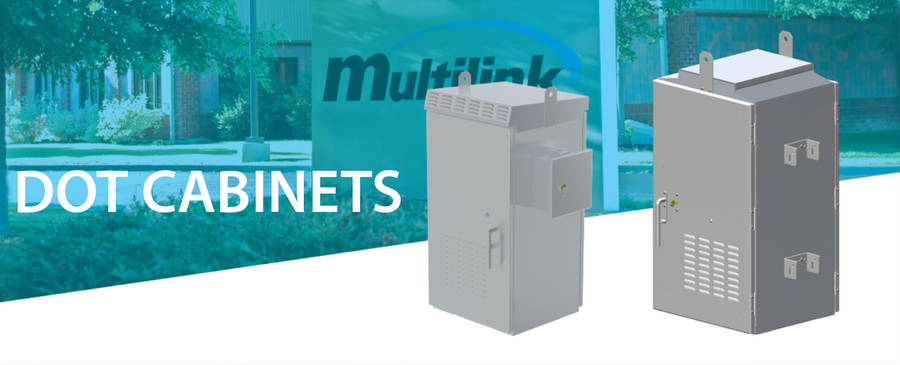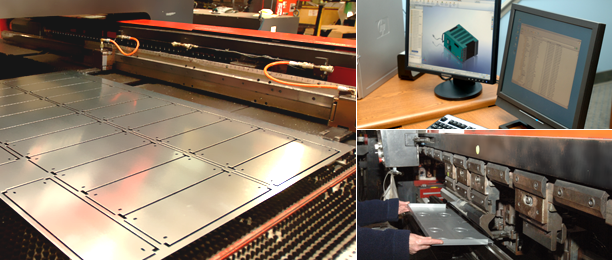{{ quickViewProduct.product_title }}
Stock ID
{{ quickViewProduct.product_stock_number }}
Product Features:
- {{ feature.product_feature_description }}
{{ option.product_option_title }}
{{ value.product_option_value_title }}
DOT Cabinets are an integral part of intelligent transportation system architectures. These aluminum or stainless-steel boxes are used to store and protect the interlocking pieces of equipment required to keep traffic lights, illuminated street signs and emergency signals up and running.
We’re talking about important equipment: everything from traffic controllers to uninterruptible power supplies and monitoring systems can be stored in DOT cabinets. Because the equipment stored inside is so valuable and necessary to keep complex systems running, DOT cabinets have to be built to specific standards while still allowing easy access for technicians. Most states’ departments of transportation have certain parameters that they require the companies who create their products to follow.
Since Multilink has on-site metal fabrication and powder coating capabilities, we also build our products in-house, including our lineup of DOT cabinets. This ultimately makes it less expensive, easier and quicker to produce and deliver orders to our customers, but it also means our craftsmen must prove themselves to certain standards in order to sell to certain markets.

Multilink's lineup of traffic control cabinets is home to aluminum and stainless-steel variations, both of which provide ideal protection for your sensitive equipment.
“Certifications bring us business because people can see that we’re capable of doing what is required,” says Ken Thompson, Multilink’s metal fabrication welding manager.
Some states' transportation departments have more rigorous certification requirements for DOT welders than others due to the variety of severe weather conditions that they experience. DOT cabinets may need to stand up to strong tropical storms like hurricanes as well as harsh heat and sunlight, which is why we chose to take this particular cert test.
“It seems like if you pass this certification, most states will accept you and you’ll have new options to do business,” Thompson says. In early October, that’s just what a group of our qualified welders did when they tested to be certified for new standards.
Our metal fabrication facility allows us to fill large or small orders in a fraction of the time it would take other companies to do the same.
The specific standards they tested for are the AWS D1.2 Structural Aluminum Welding Code GTAW, 1/8”, 5052, 1G Groove Weld Test, but it’s a lot easier to just say we were testing for more severe welding standards. Whatever you want to call it, the good news is that all seven of our qualified welders proved their skills and passed the test.
The interesting thing about certification tests is that most of the people who take them have long fallen out of touch with taking tests; the welders who took our tests were no younger than 25 years old. If it’s been a few years since you’ve been required to take a test of any kind, regardless of whether it’s a traditional paper exam or a hands-on exercise, you’re naturally going to experience some anxiety. It’s almost like occupational stage fright.
The test itself was overseen by a welding instructor from the Lorain County JVS (Joint Vocational School), a local public vocational school that serves 13 school districts in Ohio. For it, welders were required to butt two 4x6 flat coupons together and then weld them. The JVS instructor was a major help to our welders, offering constructive criticism and helping to make adjustments during trial welds.
After practice sessions leading up to the testing, we put our welders’ fabrications through a machine press so we could test how well they held up. This extra level of preparation may seem insignificant, but it proved helpful by telling our welders exactly what modifications they needed to make.

Our metal fabricators work with the latest equipment and digital CAD programs to create custom and standardized products with the utmost precision.
As far as welding tests go, this one was relatively easy for our experienced craftsmen, but it was made more difficult by the format. Welders could complete as many fabrication attempts as they wanted to, but they had to decide directly after each attempt if they wanted to submit it for judging or not. Welders couldn’t just complete five different fabrications and then choose their best or favorite, which lent an additional air of nervousness to the test. Our craftsmen, of course, managed to prove themselves and all passed with flying colors.
Not only are Multilink’s welders held to high standards, the cabinets themselves are as well. All of our cabinets are tested in our laboratory before we put them on the market, so we’re certain of the DOT cabinets’ operable temperature range.
Our cabinets meet general DOT requirements as well as NEMA 3R specifications, so they offer several important features. They protect against incidental contact with enclosed equipment, provide protection from falling dirt and water and are available with alternate locking and latching mechanisms for enhanced security and sealing.
Quality and originality are integral to everything we make, but the appeal of products like Multilink’s DOT cabinets ultimately leads back to the skilled work of the engineers and fabricators who design and produce them.
Obtaining certifications can often be nerve-racking, difficult processes, but they’re necessary to prove you have a specific skillset in today’s diversified world. Fortunately, Multilink is always committed to assembling a competent team of individuals for the job and this recent certification test has only strengthened our assurance in our motto: Innovation at Work.
Back to Multilog